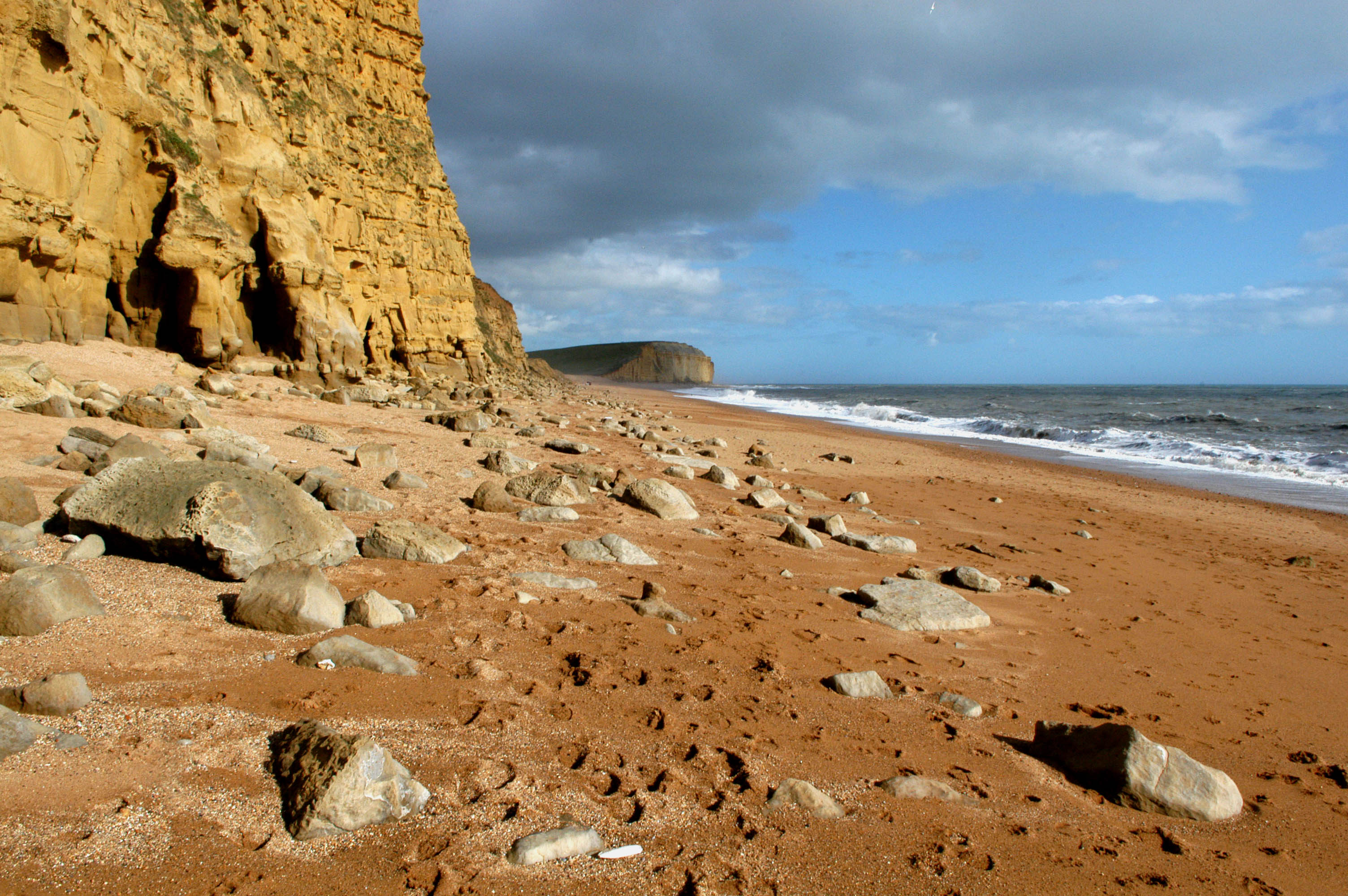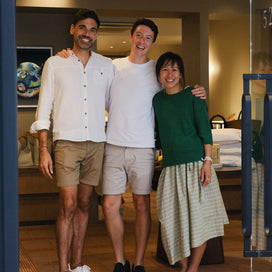Inspired by nature
Giving back: Jurassic Coast
‘Inspired by Nature’ is a series of articles exploring the influence of the natural world on our lives. We start by looking at how a fascination with all things geological led to us choosing the Jurassic Coast Trust as our first ‘giving back’ partner.
Right from the beginning we knew we wanted to give something back, so we decided to partner with organisations working to protect the natural world. To launch our ‘giving back’ programme, we sought out a cause that reflected our fascination with all things geological. For 2020, in recognition of the inspiration behind our Rocks bedding design, we decided to lend out support to the Jurassic Coast Trust, an independent charity responsible for managing the Jurassic Coast World Heritage Site.
The Jurassic Coast covers 95 miles of stunning shoreline across Dorset and Devon in the south of the United Kingdom. It’s a landscape of cliffs, beaches, rolling hills and picturesque seaside towns. It’s also a place to experience 185 million years of history. Due to an exceptional array of geological features and an abundance of fossils, the area was designated England’s first (and only) natural World Heritage Site by UNESCO in 2001.
‘The Jurassic Coast World Heritage Site is a haven for natural beauty,’ says Lucy Culkin, the Trust’s CEO. By way of example, she describes the “magnificent towering giant that is East Cliff’ and ‘the burnt red sandstone cliffs’ at Ladram Bay, as well as the experience of looking out across the water from her home in East Dorset, towards the chalk stacks of Old Harry Rocks.
‘These are special places that we all cherish and which help to make our Site globally outstanding,’ Lucy says.
We also spoke with Guy Kerr, the Trust’s Business Development Manager to find out more about this exceptional terrain and the importance of conserving it. To begin with, we wanted to find out about the strains being placed on the region. Guys cites climate change and rising sea levels as the biggest threat faced, along with unsound development. The team works hard, he says, to ensure that structures such as sea defences aren’t doing more harm than good.
‘Managing the coast sustainably is about balance,’ says Lucy. ‘We need to act sensitively to the very real threats erosion poses, but also learn to celebrate and protect all the wonderful benefits that it brings. If we can do that we will be better prepared to adapt to inevitable change and defend the World Heritage Site for generations to come.’
Managing the coast sustainably is about balance. We need to act sensitively to the very real threats erosion poses, but also learn to celebrate and protect all the wonderful benefits that it brings.
To further explain what it is the Trust does, Lucy drew our attention to some of the conservation work she and the team have been involved in recently. These include recording aerial images of the Fossil Forest near Lulworth Cove so as to be able to better monitor changes over time, and a project to restore part of the Lower Otter River near Budleigh Salterton in East Devon.
This year the coast has seen an increase in tourists, with more Brits being obliged to holiday at home. In many respects this is a positive for the Trust and the region — increasing awareness and meaning a boom for local businesses. Guy describes most visitors as behaving responsibly, however this summer a few have presented yet another threat: litter and vandalism. It’s a problem the Trust is working hard to tackle.
Not far from where he lives is Guy’s favourite spot: the Undercliffs National Nature Reserve. He describes it as ‘a real hidden gem’ — a wilderness paradise resulting from an enormous 19th century landslide that ‘often resembles a temperate rainforest.’ Bring lots of water, good walking boots and a camera, Guy recommends.
Any visit to this part of the world comes with an amazing sense of ‘deep time.’ So does working in an environment where so many millennia are laid bare ever feel overwhelming? ‘Yes! you would need a PhD in about 12 different scientific disciplines to wrap your head around it all,’ Guy says. ‘Every day is a learning day — it’s what makes my job so interesting.’
Head to JurassicCoast.org to learn more about the Trust’s important work and how you can support them, as well as information on visiting this extraordinary World Heritage Site.
In addition to our annual partnership donation to the Jurassic Coast Trust, 10% of all proceeds from sales of our Rocks bedding collection also goes to the conservation of this important natural site.








